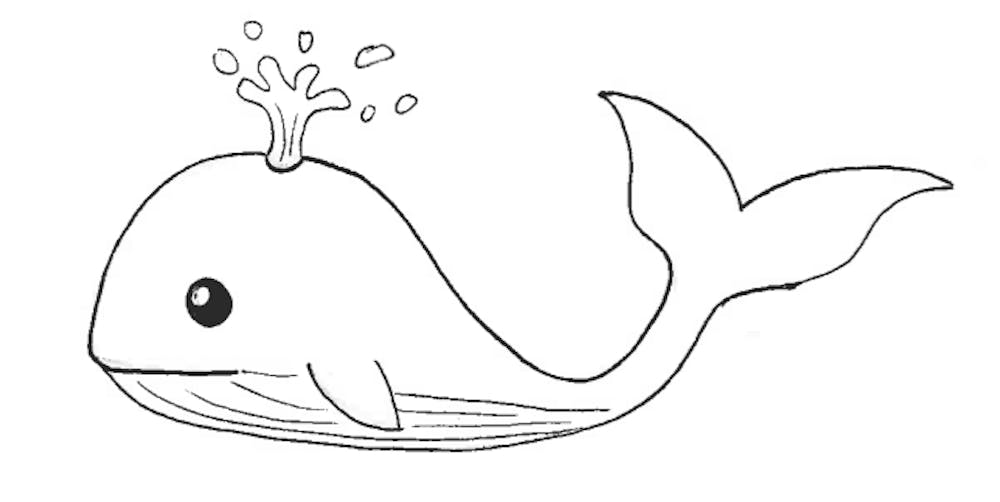Curious students on the heels of the global climate strike movement turned out in droves to the three-day Clifford Symposium this past week.
There, they grappled with the future of the global ocean and were introduced to exploratory and conservationist efforts. The symposium brought together researchers, activists, filmmakers and students to offer a multidisciplinary perspective on one of the world’s most precious resources.
“I wanted to strike a balance between sounding the alarm and asking people to share research that would incite a sense of wonder and hope,” said Associate Professor of English and American Literatures Daniel Brayton, one of the symposium’s organizers who also teaches in the Environmental Science Department.
Keynote speaker Dr. Kara Lavender Law, of the Sea Education Association (SEA), struck that balance in her talk, “Reflections of an Oceans Plastic Scientist” on Thursday night in Wilson Hall. Law, a leading scientist in the study of marine plastic debris, spoke about her educational path and discussed the harm that plastics, especially microplastics (pieces less than five millimeters long), can have on marine life.
Law and colleagues recently estimated that between 1950–2016, there were 8.3 billion metric tons of plastic produced globally. “I can’t even tell you a reasonable number of Empire State Buildings or elephants or football stadiums to give you an idea of how much material that is,” she said.
Scientists don’t know exactly how much of that plastic debris is now in the ocean, what form it takes or how it will impact human health. However, they widely agree that plastics are hazardous to marine animals, who are likely to ingest or become entangled in the material. Some bio-families will even grow on floating microplastics.
To Law, solving the ocean plastic pollution will require a multidisciplinary overhaul of the current system. She suggested the audience start locally, by asking themselves: “What happens to my trash?” Although the question may seem obvious, acting on it can be hard.
“The conveniences of [using plastic] don’t impact us on a daily basis and we’re privileged enough to live in this beautiful clean, green environment regardless of the waste we’re producing and the impact on our earth,” Alex Cobb ’20 said.
[pullquote speaker="Daniel Brayton" photo="" align="center" background="on" border="all" shadow="on"]We tend to think of the environment as green. We think of green space, of grassy meadows and forest, and yet 71% of the Earth’s surface is covered by water.[/pullquote]
Outside Wilson Hall, a group of local women from Sewing For Change, a “community effort to end the use of single-use bags,” were working to reduce our collective waste. Since January of 2019, they have sewn 500 bags from reused materials. Bethany Barry Menkart, a group member, said they hope to reach 1,000 bags by the end of the year with the help of students.
On Friday afternoon, attendees crowded the Rohatyn A. Jones conference room to hear about whale watching in New Zealand at a talk comparing previous and present global whale population numbers. Jennifer Crandall ’20.5 and Caitlin Dicara ’20 presented alongside visiting Associate Professor of Maritime History and Literature Richard King of SEA.
The students opened by discussing their experience conducting six weeks of fieldwork on a tall ship off the coast of New Zealand. Crandall described being woken up at 3 a.m. one day amidst rough seas. The waves were over 13 feet high and it was pouring rain and windy. In that moment, Crandall recalled, “the ocean became more alive to me because I saw how powerful it was.”
Over the course of the semester, Crandall, Dicara and their 14 classmates transcribed the log book of Commodore Morris, which detailed where and when the sailor had seen and killed whales in the 1850s. Using data from the log and their own journey, they created a Geographic Information System map and studied shifts in whale populations.
King presented an overview of the history of right whales (or black whales), whose coastal living and bountiful oil made them the “right” whales to hunt. His discussion, like Law’s, struck the balance between underscoring the perils of the present and offering hope for the future. King explained, for example, that from 1927–1963 not a single right whale was sighted off the coast of New Zealand, in large part due to over-whaling. Now, with the population on the rebound, there are around 70 sightings per year.
Throughout the symposium, audiences and speakers alike grappled with the idea of how to get oceanic issues on peoples’ radars. As Dicara explained, “it’s really hard to get people to care who are inland of the ocean.”
“We tend to think of the environment as green,” Brayton said. “We think of green space, of grassy meadows and forest, and yet 71% of the Earth’s surface is covered by water.”
The symposium’s message was clear: If we want to understand environmental issues and advocate for a healthier world, we can start by looking to the ocean.
Clifford Symposium examines future of the global ocean

Comments



